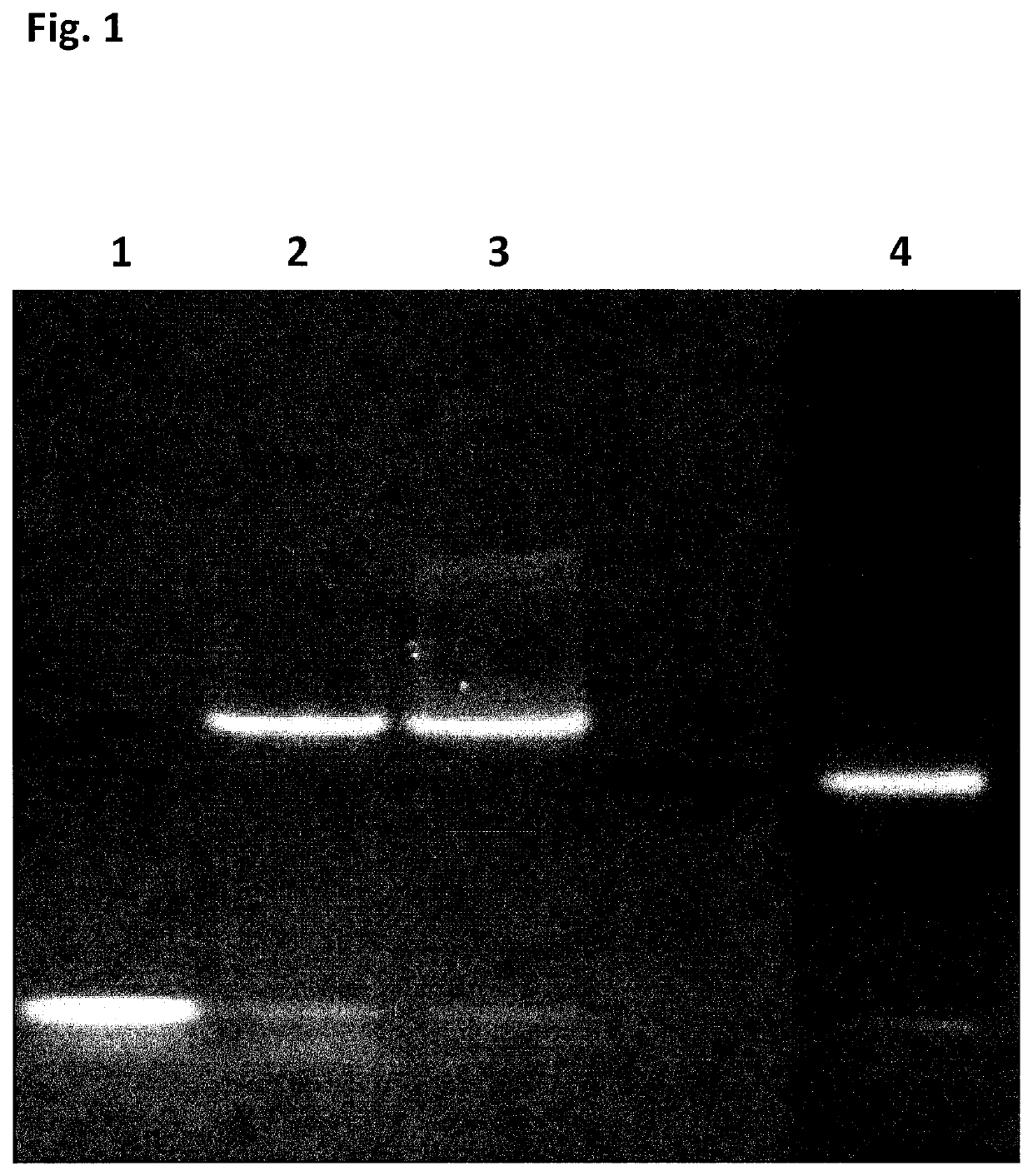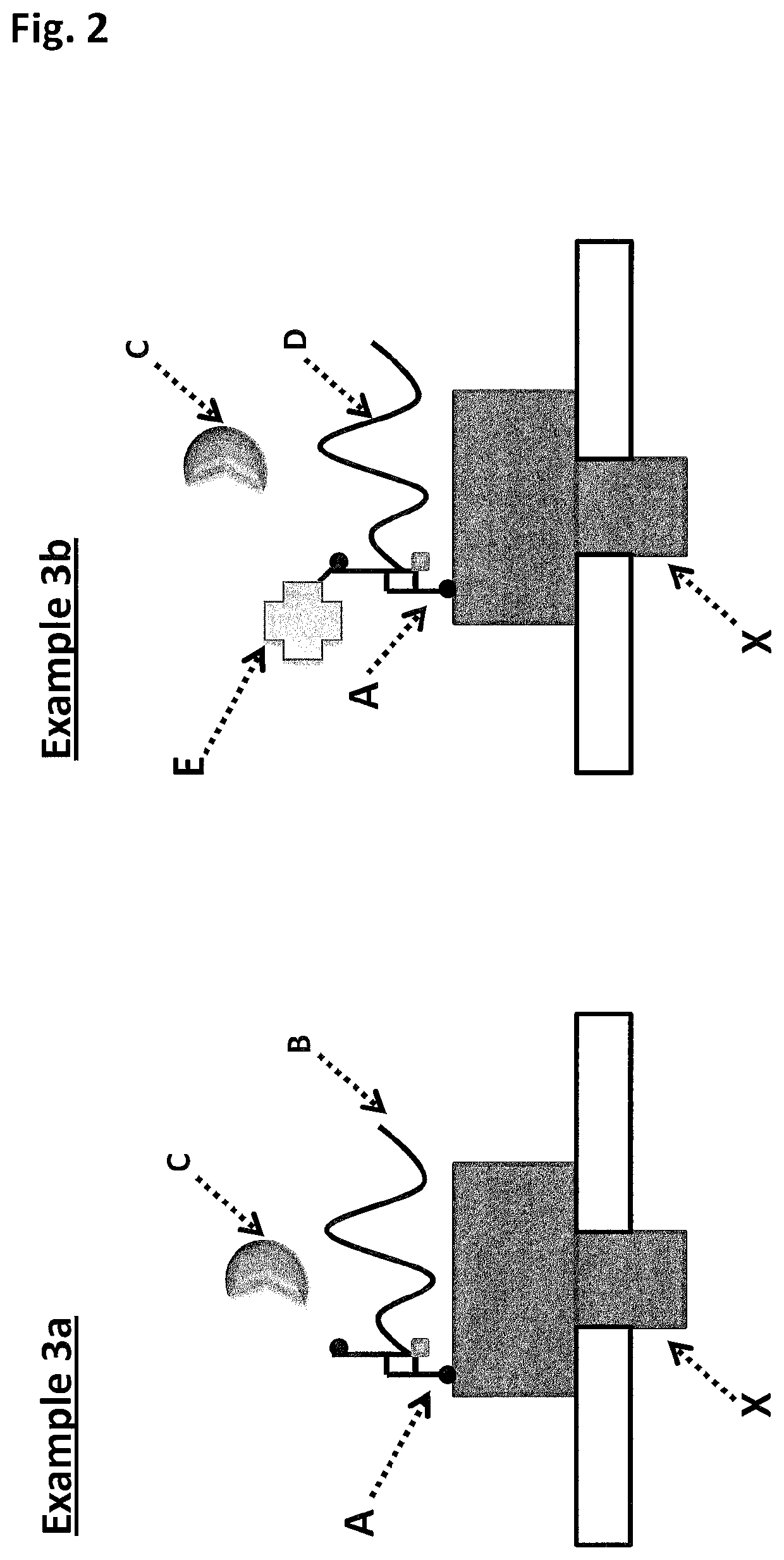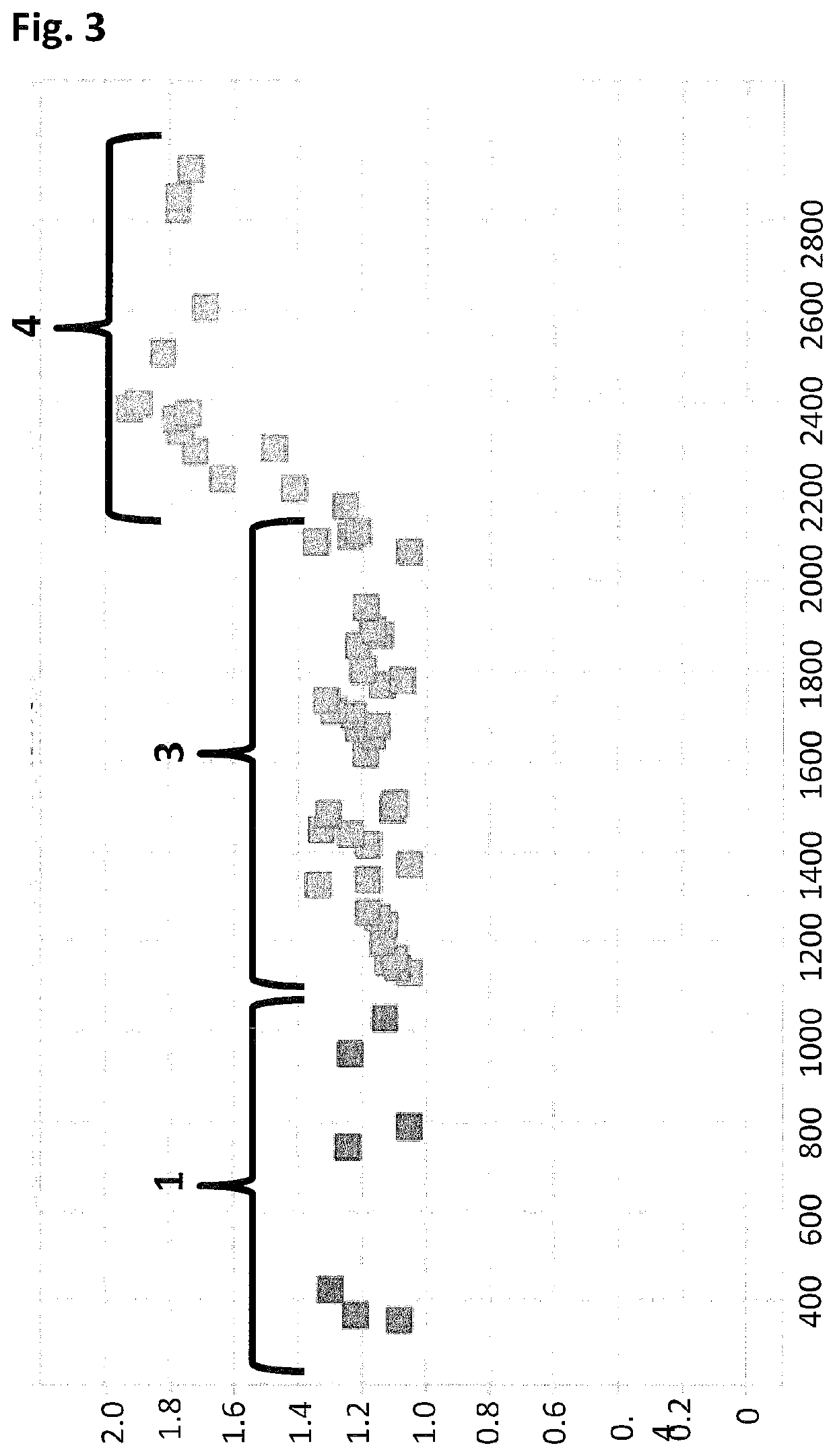SSB method
a technology of ssb and method, applied in the field of ssb method, can solve the problems of lowering data output, affecting the sequencing efficiency of arrays, so as to reduce the duty cycle, prevent secondary structure formation, and high duty cycle
- Summary
- Abstract
- Description
- Claims
- Application Information
AI Technical Summary
Benefits of technology
Problems solved by technology
Method used
Image
Examples
example 1
Expression and Purification of EcoSSB-WT (SEQ ID NO: 65) and EcoSSB Mutants (SEQ ID NO's: 66-69)
[0410]All proteins were expressed with an N-terminal hexahistidine tag and TEV protease digestion site in BL21 STAR (DE3) competent cells (Invitrogen). Transformed colonies from LB-agar plates with 100 μg / ml ampicillin were grown in TB media with 100 μg / ml ampicillin and 20 μg / ml chloramphenicol at 37° C. for 7 h until OD600 reached 1.5 for EcoSSB-WT (SEQ ID NO: 65), EcoSSB-CterAla (SEQ ID NO: 66) and EcoSSB-NGGN (SEQ ID NO: 67) and 0.15 for EcoSSB-Q152del (SEQ ID NO: 68) and EcoSSB-G117del (SEQ ID NO: 69) (slow growth may be due to high toxicity of these mutants). Cultures were moved to 18° C. and allowed to cool for 30 mins before isopropyl β-D-1-thiogalactopyranoside (IPTG) was added to a final concentration of 1 mM and fermentation continued overnight (16-18 h). Cells were harvested by centrifugation at 4000 g and pellets were lysed for 2 h at 4° C. in a buffer containing 1x BugBuster...
example 2
Permanent Blocking of a Nanopore by the C-Terminus of SSB
[0413]Initial experiments designed to first assess the potential use of SSB as an additive or as a translocation facilitator protein for nanopore DNA sequencing quickly determined that addition of the E. coli SSB protein (EcoSSB-WT, SEQ ID NO: 65), in complex with ssDNA, to the cis chamber results in rapid blocking of the nanopore under positive potential. This blocking was permanent and could only be cleared on reversal of potential, unlike the transient blocking events observed for the translocation of ssDNA.
[0414]The SSB protein from E. coli SSB (EcoSSB-WT, SEQ ID NO: 65) is a very well characterised protein due to its essential role in DNA replication, repair and recombination. E. coli SSB generally exists in solution as a homotetramer in the absence of DNA. This tetrameric protein is largely a compact globular structure consisting of the N-terminal two thirds from each protein subunit, which constitutes the ssDNA binding ...
example 3
Abolition of ssDNA Blocking by a Pore:DNA Complex Using SSBs that Lack a Negatively Charged C-terminus
[0425]When using a nanopore as a possible sequencing platform, having control over the DNA can often be an important consideration. An example, of this can be seen in exopore sequencing where not only can the cleaved bases interact with the nanopore, as desired, but also the DNA strand itself. Interaction of the strand itself may abolish the sequencing read either through disruption of the flow of bases to the detector or by stripping the DNA analyte from the enzyme. To assay for the ability of SSB to abolish DNA nanopore interactions, an extreme case scenario was used. A DNA strand (SEQ ID NO: 78, which has a thiol group at the 5′ end of the strand) was covalently attached to a single subunit of haemolysin (SEQ ID NO: 77 with the mutations N139Q / L135C / E287C and with 5 aspartates, a Flag-tag and H6 tag to aid purification) and another strand of DNA ((comprising SEQ ID NO: 79 for Exa...
PUM
| Property | Measurement | Unit |
|---|---|---|
| diameter | aaaaa | aaaaa |
| pH | aaaaa | aaaaa |
| diameter | aaaaa | aaaaa |
Abstract
Description
Claims
Application Information
 Login to View More
Login to View More - R&D
- Intellectual Property
- Life Sciences
- Materials
- Tech Scout
- Unparalleled Data Quality
- Higher Quality Content
- 60% Fewer Hallucinations
Browse by: Latest US Patents, China's latest patents, Technical Efficacy Thesaurus, Application Domain, Technology Topic, Popular Technical Reports.
© 2025 PatSnap. All rights reserved.Legal|Privacy policy|Modern Slavery Act Transparency Statement|Sitemap|About US| Contact US: help@patsnap.com



